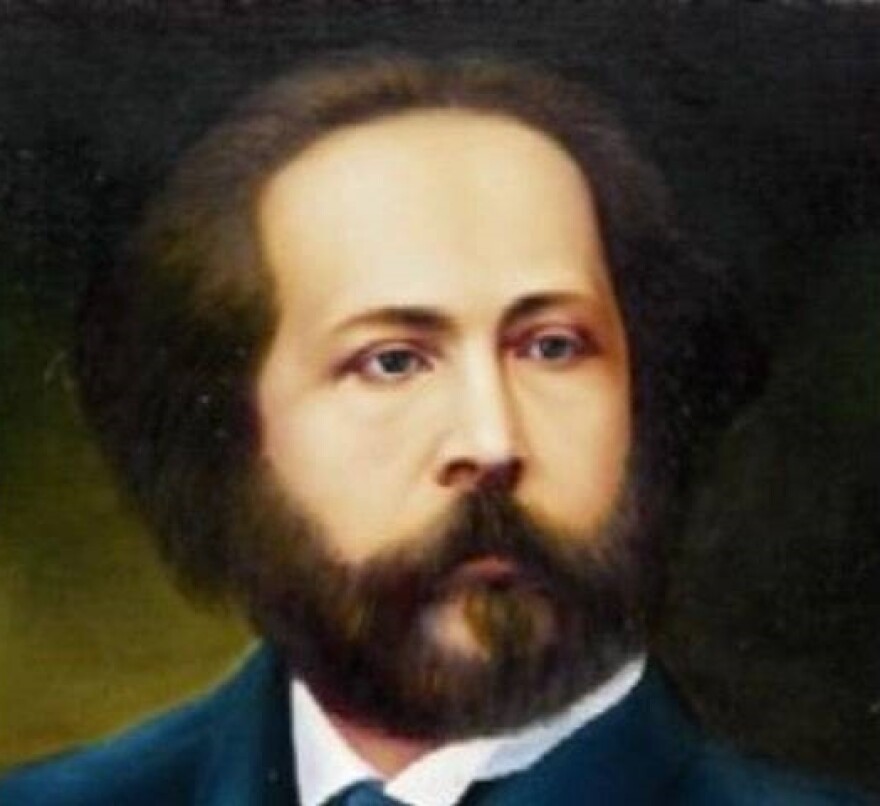If you grew up listening to ‘Pop’ music from the 1950’s on, you are probably aware of the concept of the ‘one-hit wonder.’ It got me thinking about whether there is such a thing in classical music and how would you define the terms. What constitutes a ‘hit’ from the classical standpoint? Should I consider composers who were known for mainly one work but had in fact written more? Fortunately I am able to play more than just the top 100 best classical pieces, so defining what a hit is for the JPR listener may be a bit broader, but there are a number of pieces that still qualify.
One of the most interesting wonders is Tomaso Albinoni because his one-hit, the famous Adagio that is attributed to him, was actually composed by the 20th-century musicologist and Albinoni biographer Remo Giazotto, purportedly based on the discovery of a manuscript fragment by Albinoni. Albinoni himself wrote much more music including dozens of concertos and sonatas which feature the oboe.

Johann Pachelbel’s Canon is a part of a larger piece, his Canon and Gigue for 3 violins and basso continuo and he also wrote a large number of pieces that are almost never performed. The Canon was rediscovered only in the 20th century and after it was first published in 1919, the piece became extremely popular. The piece’s chordal progression has even been appropriated in numerous commercial pop hits such as in Pet Shop Boys cover of “Go West”, Coolio’s “C U When U Get There” and Green Day’s “Basket Case”.

Johann Nepomuk Hummel was an Austrian composer and virtuoso pianist and his music reflects the transition from the Classical to the Romantic musical era. At 8 years old, he was offered music lessons by Mozart who also fed and housed him for 2 years free of charge. Hummel wrote hundreds of pieces including a large amount which include the guitar but today is mostly remembered for his Trumpet Concerto.

Nicolo Paganini was considered the greatest violinist of his time who was such a virtuoso that it was rumored that he sold his soul to the devil in exchange for his skill on the violin. He composed numerous violin works, 18 sonatas for the combination of guitar and violin and a couple of violin concertos as well, but his one-hit is the Caprice No. 24 for solo violin which a number of other composers used as the raw material for sets of variations on the melody including Brahms and Rachmaninoff.

French composer Édouard Lalo wrote music in a broad variety of genres including solo piano, chamber music, symphonies, opera and ballet but his one-hit is “Symphonie Espagnole” which is really a violin concerto by another name. His music was never really popular despite its originality; it incurred considerable criticism for being allegedly too progressive and Wagnerian and his Symphony in G minor was a favorite of Sir Thomas Beecham. In 1962, composer Maurice Jarre used a theme from Lalo’s Piano Concerto for the exotic score to “Lawrence of Arabia”.

Paul Dukas, a French composer from later in the 18th century has as his one-hit “The Sorcerer’s Apprentice” which even made it into a Disney movie that starred Mickey Mouse. Dukas destroyed a large number of his compositions and after becoming familiar with his symphony and the ballet “Le Péri”, it’s clear that he is a very gifted composer who wrote some wonderful music beyond his one hit. I wonder what he destroyed that posterity might have judged less harshly.

Bedrich Smetana was a Czech composer who pioneered the development of a musical style which became closely identified with his country’s aspirations to independent statehood. His one-hit is “The Moldau” but it is only one movement of a larger work called “Má Vlast” or “My Country”. It is a cycle of six tone poems inspired by his native Bohemia and the Moldau is the principal river of the country but there also descriptions of the countryside including my favorite, “From Bohemia’s Woods and Forests”.
There are other composers who might be considered classical one-hit wonders, but the real reason I assembled this incomplete catalog of the hits was to encourage you to seek out and explore the other lesser known pieces by these composers. We here at JPR are excited to be able to play more than just the hits, but perhaps in our effort at presenting a wider variety, you might be missing some of your favorites.




